© ROOT-NATION.com - Use of content is permitted with a backlink.
Comparison of the smartphone cameras is a tedious task. The best option would be just show you a pile of pictures taken with them and let everyone decide what they like most. However, if you are still wondering what I think about these photos, you should continue reading.
I won’t be pixel peeping crops from all of those images. Details themselves don’t make photos better. OnePlus 3 has the greatest amount of pixels, but it doesn’t help it to lead this comparison. I will focus on the general perception of the photos and the other important things. If you want, feel free to zoom and crop samples as much as you like.
Competitors: iPhone 7 Plus vs Galaxy S7 Edge vs OnePlus 3
Apple iPhone 7 Plus has the most advanced dual camera module. Both sensors have a resolution of 12 megapixels and an equivalent focal length of 28mm f1.8 and 56mm f2.8. Unfortunately, only wide module has optical stabilization. iPhone’s opponents are Samsung Galaxy S7 Edge with its 12 megapixel f1.7 module with optical stabilization and a powerful DualPixel autofocus and OnePlus 3, Chinese smartphone with its 16 megapixel OIS f2 module.
Comparison
We will star with this casual landscape frame. Let us look at how our phones handled it. All of them made some kind of mess, but personally I like the OnePlus 3 picture the most and S7 Edge second. The new iPhone 7 Plus made picture look quite a bit overexposed. By the way, in this case HDR and other “make-it-better” features were turned off in all three devices.
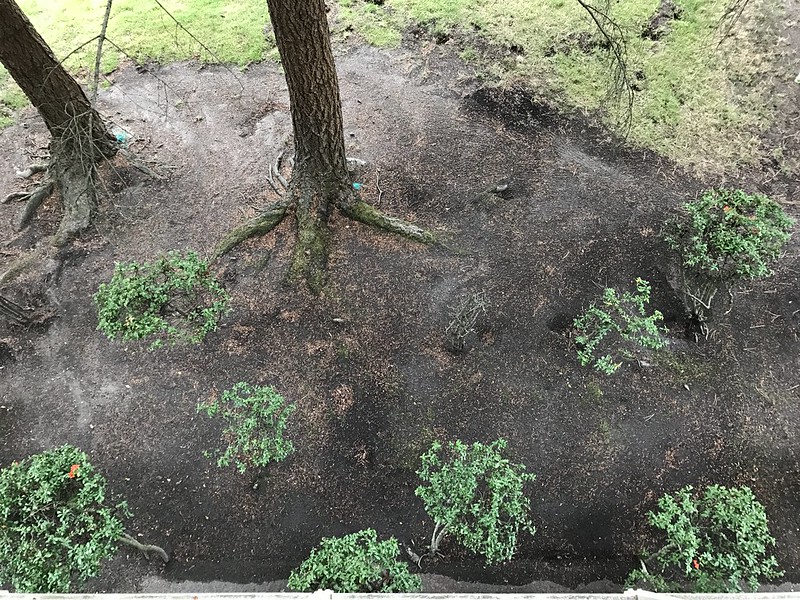
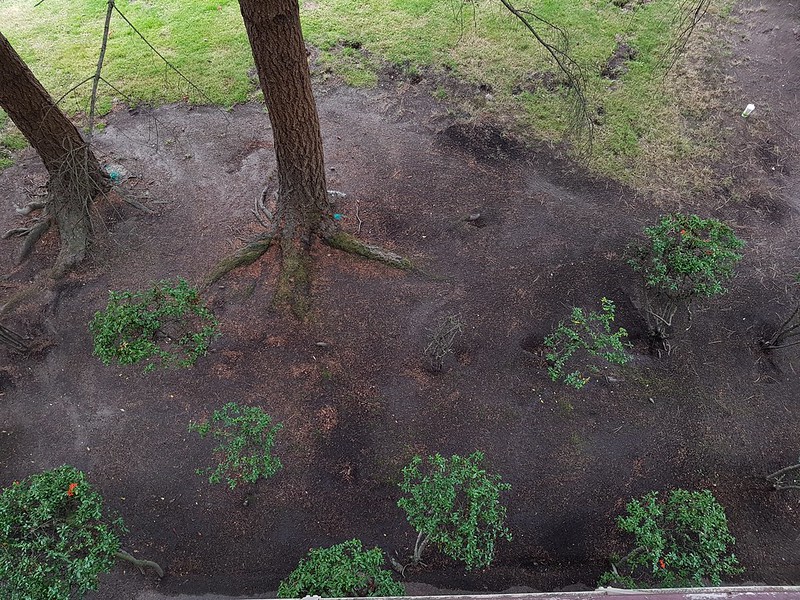
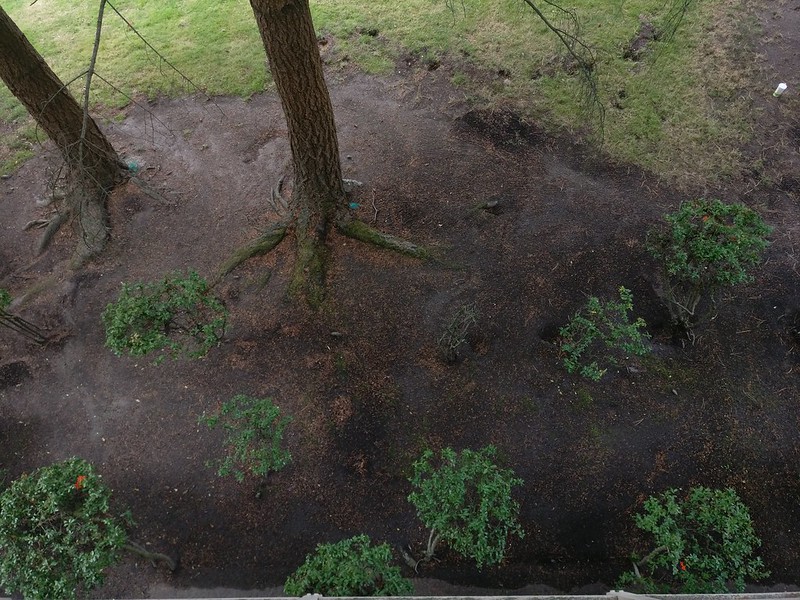 To the next one. Let us stop torturing poor smartphones and let them use their HDR software feature and look at the result for landscapes in HDR.
To the next one. Let us stop torturing poor smartphones and let them use their HDR software feature and look at the result for landscapes in HDR.
Now it is becomes clear, why people are so excited about their Samsung S7 cameras. These cameras can make look better even the most gloomiest day ever. Despite the fact that the result from Samsung will appeal to many customers, the harsh reality is better reproduced by iPhone 7 Plus. OnePlus 3 didn’t show anything special, but nothing bad either.
Now let’s look at panorama stitches. It is a very important skill for any smartphone to be able to create really wide landscapes.
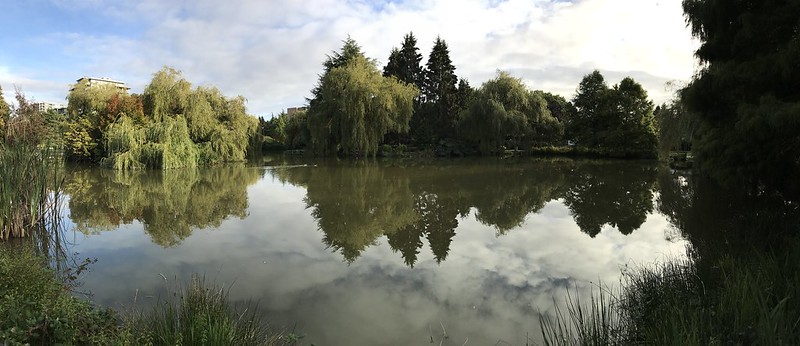
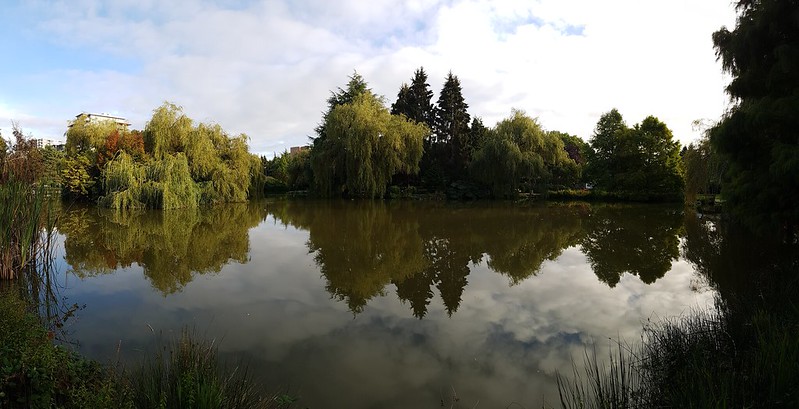
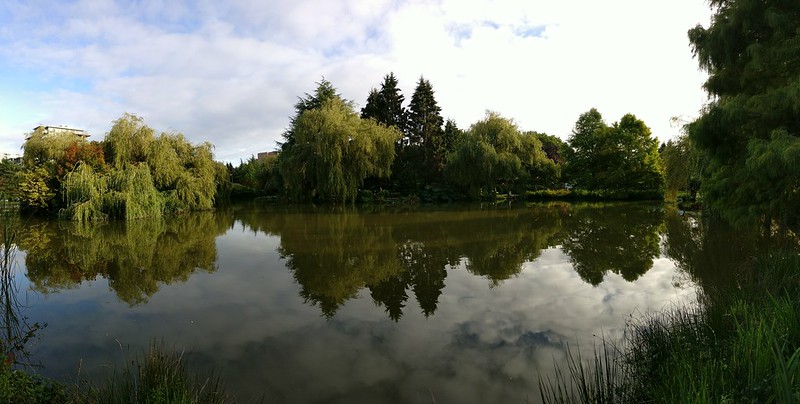 iPhone 7 Plus is the only one who preserved almost all details of the sky to the right, while two others overexposed upper-right corner badly. Granted OnePlus3 saved the most details of the bush in lower-right corner, but it is not important for the image in general. The complexity of this picture is that the right edge of the scene required a significant change in exposure that required adjustments on the go without effecting overall brightness of the image. I can not even say that Apple iPhone 7 Plus made it perfectly, but the result is best among the three.
iPhone 7 Plus is the only one who preserved almost all details of the sky to the right, while two others overexposed upper-right corner badly. Granted OnePlus3 saved the most details of the bush in lower-right corner, but it is not important for the image in general. The complexity of this picture is that the right edge of the scene required a significant change in exposure that required adjustments on the go without effecting overall brightness of the image. I can not even say that Apple iPhone 7 Plus made it perfectly, but the result is best among the three.
Now it is time to make picture of myself against this beautiful background. I’ll take that picture using the rear cameras of all smartphone with the help of modern tool – selfie-stick.
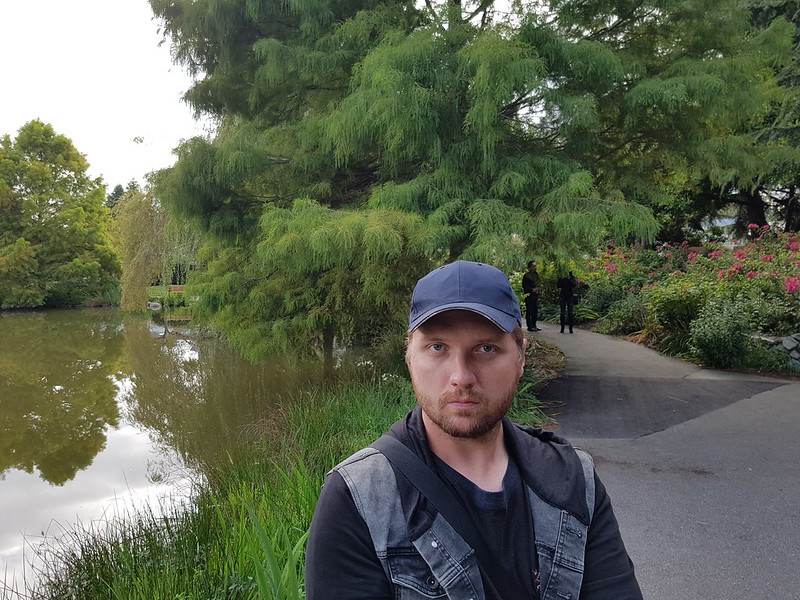 In this case iPhone 7 Plus begins to forge ahead thanks to his second camera unit and software algorithms that artistically blur the background. While the pictures from S7 Edge is just OK, iPhone 7 Plus allows you to deliver a completely different look of the same place. Despite all the imperfections of the algorithm and the technical limitations of the second 56 mm camera unit in the iPhone 7 Plus (F2.8 and lack of stabilization ), for me iPhone 7 Plus is the winner in this “category”. It has to be mentioned that it is hard to take a good frame without “camera shake” with iPhone 7 Plus, but keep in mind that I have beta software of iOS running that feature and release might just fix all that. It is noteworthy that the “blur” preview is displayed on the screen in real time before making an actual image and that alone distinguishes this technology implementation from others on the market.
In this case iPhone 7 Plus begins to forge ahead thanks to his second camera unit and software algorithms that artistically blur the background. While the pictures from S7 Edge is just OK, iPhone 7 Plus allows you to deliver a completely different look of the same place. Despite all the imperfections of the algorithm and the technical limitations of the second 56 mm camera unit in the iPhone 7 Plus (F2.8 and lack of stabilization ), for me iPhone 7 Plus is the winner in this “category”. It has to be mentioned that it is hard to take a good frame without “camera shake” with iPhone 7 Plus, but keep in mind that I have beta software of iOS running that feature and release might just fix all that. It is noteworthy that the “blur” preview is displayed on the screen in real time before making an actual image and that alone distinguishes this technology implementation from others on the market.
“And where is OnePlus 3?” – The reader will ask. There came some technical confusion with “selfie-stick”, OnePlus 3 refused to accept it after iPhone 7 Plus and S7 Edge. I had to make this comparison without it, but it is clear that OnePlus 3 has nothing to show versus iPhone’s double module portrait mode. Owners of Samsung could say that the S7 also has a function to blur the background, why didn’t I use it then? I did, but it gave very strange results and I decided to ignore it completely.
After seeing the results of background blur from Apple iPhone 7 Plus, I was curious to see how an “adult camera” Fuji X-T2 with 35mm F2 lens handles same kind of situation and compare the results with Apple’s new iPhone 7 Plus algorithm. Taking the crop factor in to an account, Fujifilm X-T2 just delivers full frame equivalent of 53mm F2.8 lens, that is theoretically comparable to the 56mm f2.8 second module lens in iPhone 7 Plus. Archie, the Yellow Guy, graciously agreed to pose.
Now, if Archie had not lost an eyebrow on the picture taken with Apple iPhone 7 Plus, I could of even begin a serious comparison in different between sharpness, blur character, eсt, but not in the current state. The algorithm is set to work with human physiology, and it doesn’t look good with other objects. Even considering that software isn’t ready for public yet (as you remember, I have beta iOS installed on my iPhone 7 Plus to access “blur” feature) the “blur” or “boka” still looks quite synthetic and not natural enough to mimic pro grade lens results. But that’s just my opinion and iPhone 7 Plus images with this effect applied will be more then enough to amaze average consumer.
Let’s go deeper in to the park, where I saw some fat spiders. With their help we can test the macro settings for our phones.
It is easy to see that Samsung S7 have done better job than other two, however, it is worth to say how it was done. In one way or other AF in all of the smartphones couldn’t focus on spider. Apple iPhone 7 Plus handled the worst, constantly would take blurred shots and did not allow any of it’s cameras get close enough. The picture form iPhone 7 Plus of this particular spider are not usable. Then I took a pictures of another spider with iPhone 7 Plus and the results were at least satisfying. S7 Edge and OnePlus 3 also couldn’t focus with the help of auto-focus, but both smartphone’s camera applications have the ability to control the focus point, which I used. I switched focus to the minimum distance on each device and then have brought a smartphone as close to the spider as I could. Samsung S7 Edge’s camera almost allowsto to touch the spider’s back with the lens and F1.7 aperture at such a distance provides an astoundingly beautiful blur (not software blur but the real optical one). OnePlus 3 focuses a little further from the object so the picture does not look as epic as from S7 Edge, but also very good. By the way, here is a pictures of another spider, where iPhone 7 Plus at least managed to make good photo.
iPhone 7 Plus is not always that bad in macro. With controlled lighting and simple background, it can deliver very good results. Keep in mind that second 56mm module has nothing to do with macro cause it doesn’t focus close enough and what you see on pictures taken with “2x” mode this close is just digital zoom.
It’s time to leave the park and on the way home, I took another shot against the light, filled with different colours and details.
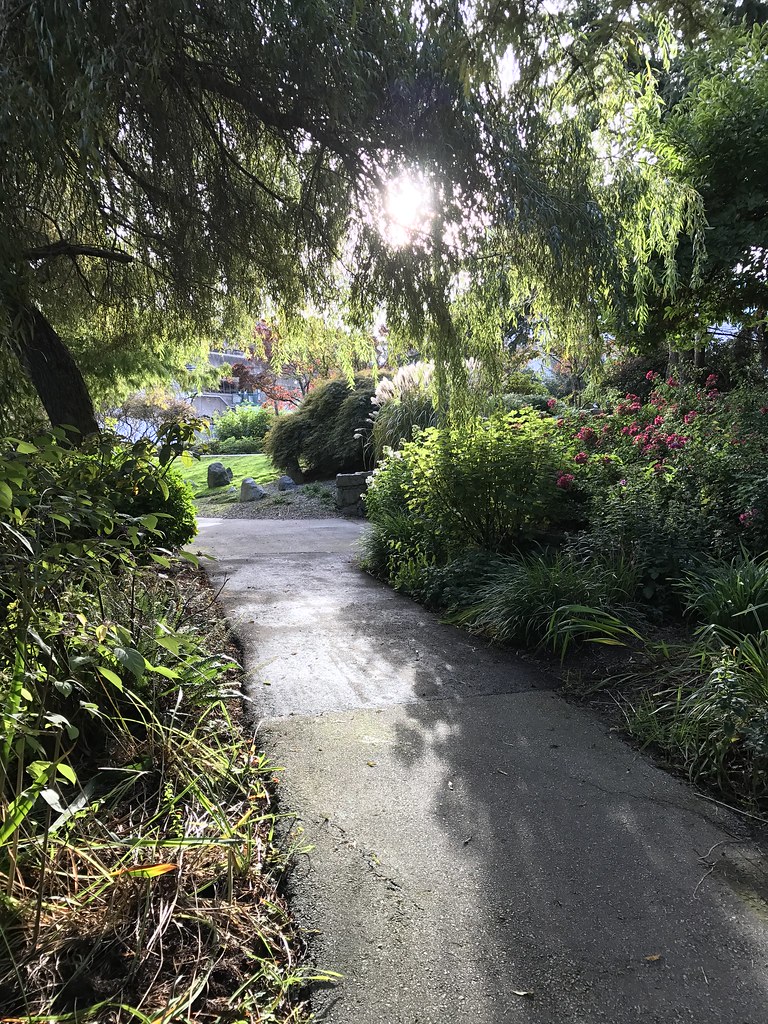
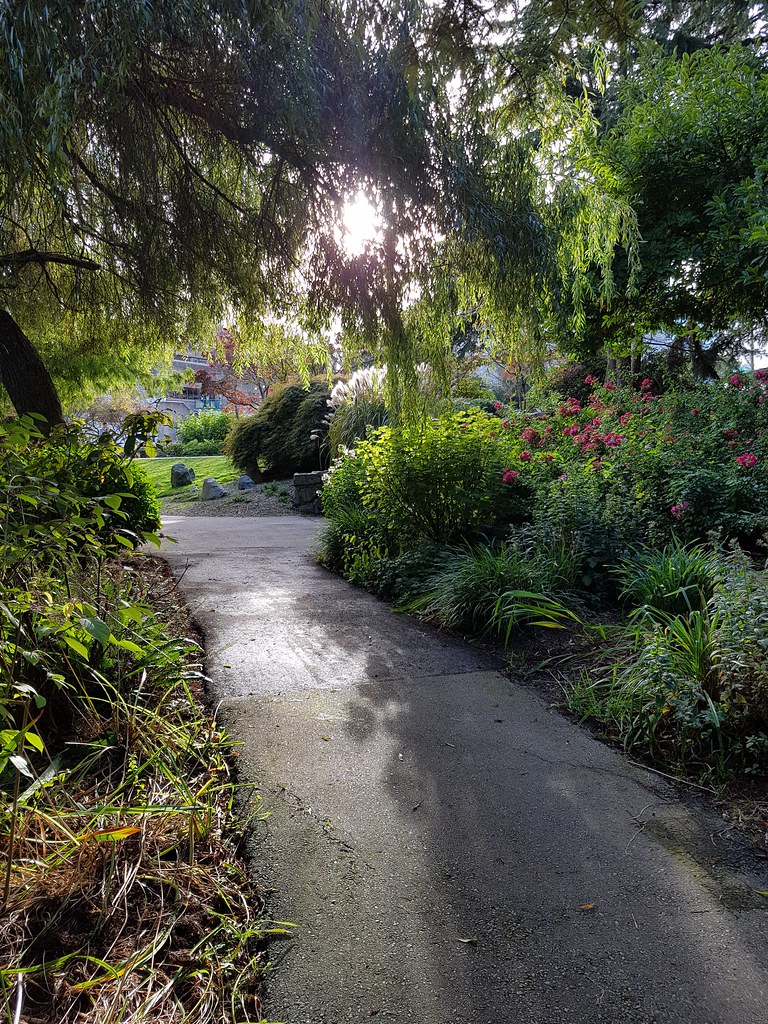
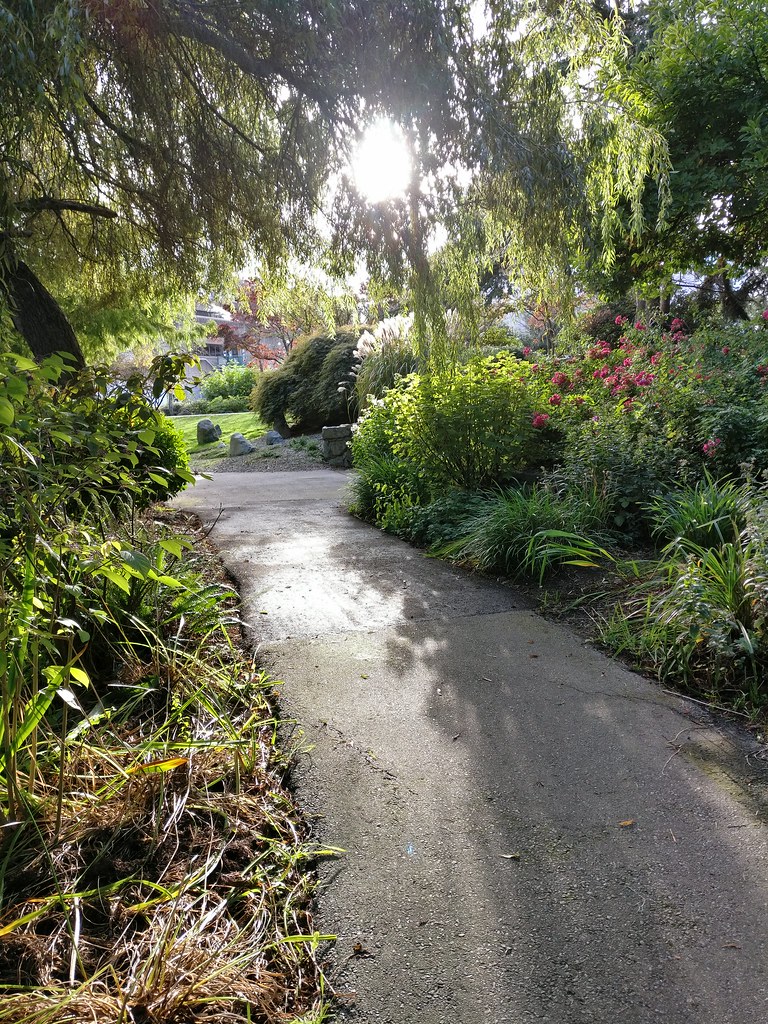 If you look at the picture in general, as for my taste, all three smartphones handled about the same. If looking closer, pixel by pixel, I’m sure everyone will find his personal favourite one, but I personally like the way OnePlus 3 handled this scene. It has delivered “my mood” that I intended to capture.
If you look at the picture in general, as for my taste, all three smartphones handled about the same. If looking closer, pixel by pixel, I’m sure everyone will find his personal favourite one, but I personally like the way OnePlus 3 handled this scene. It has delivered “my mood” that I intended to capture.
As the sun sat down – it’s time for night photos and comparing the cameras in low light.
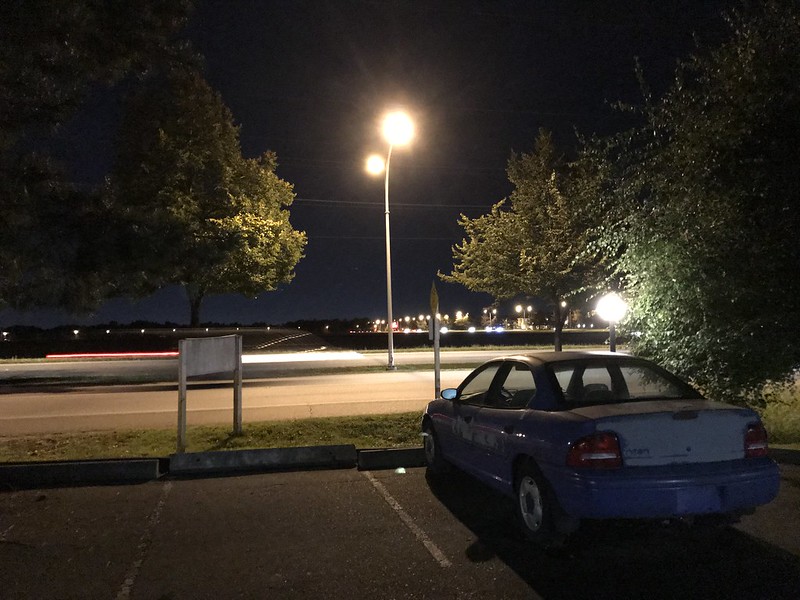
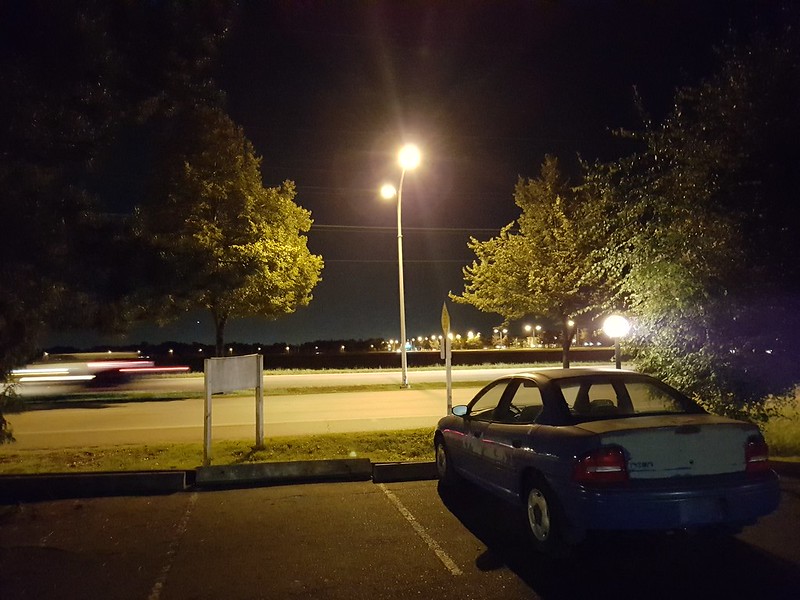
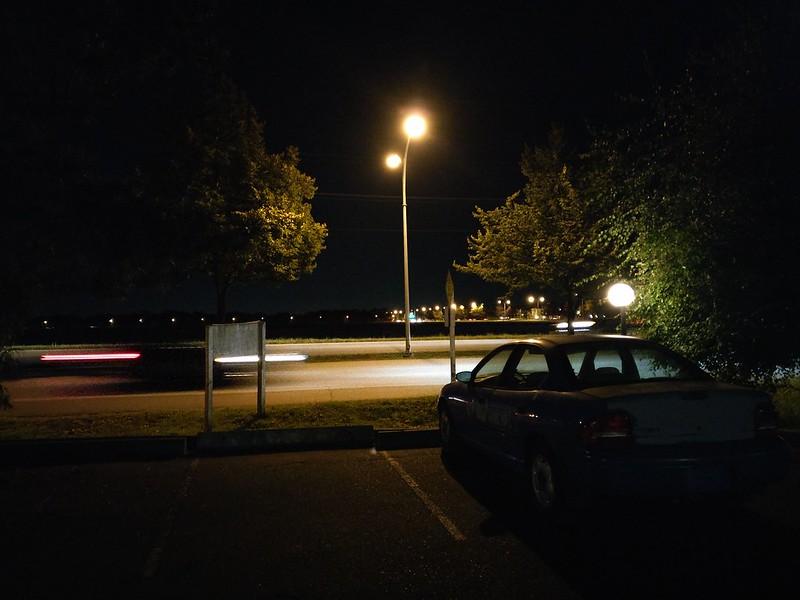 In this situation, by default, the worst result was proved by OnePlus 3 camera, hiding noise together and details in deep shadows. In fairness, I note that it is possible to lift the shadows in photo editor (for example, I used the free Snapseed), returning color and details, but it will also bring up the noise.
In this situation, by default, the worst result was proved by OnePlus 3 camera, hiding noise together and details in deep shadows. In fairness, I note that it is possible to lift the shadows in photo editor (for example, I used the free Snapseed), returning color and details, but it will also bring up the noise.
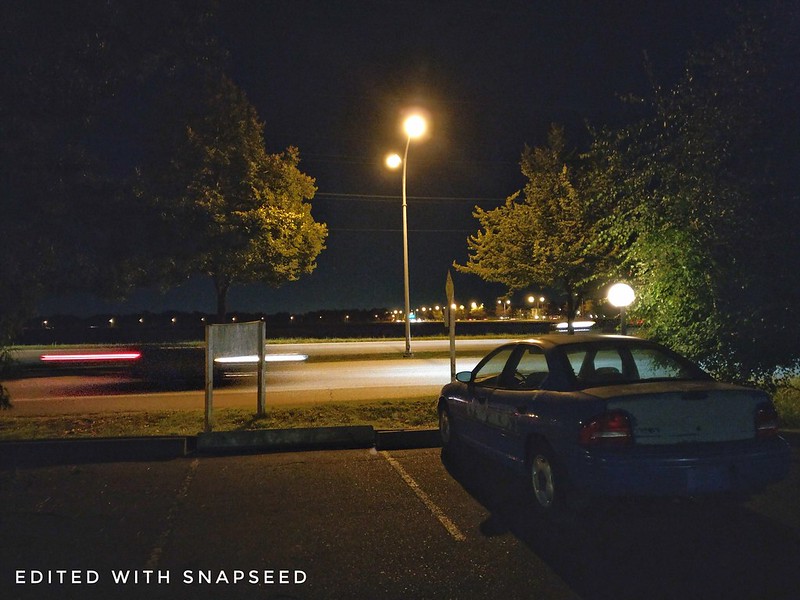 iPhone 7 Plus gave details and color the best of all. An interesting point that in this light the second 56 mm module is silently disabled in Apple’s camera application with only digital zoom left available. Samsung S7 Edge’s camera reduces noise quite aggressively, destroying details and colour. In general, these cameras were not created to shoot in low light. I’ll just let you to decide wich camera you like bets in this kind of scene, I would not use result from any of them personally.
iPhone 7 Plus gave details and color the best of all. An interesting point that in this light the second 56 mm module is silently disabled in Apple’s camera application with only digital zoom left available. Samsung S7 Edge’s camera reduces noise quite aggressively, destroying details and colour. In general, these cameras were not created to shoot in low light. I’ll just let you to decide wich camera you like bets in this kind of scene, I would not use result from any of them personally.
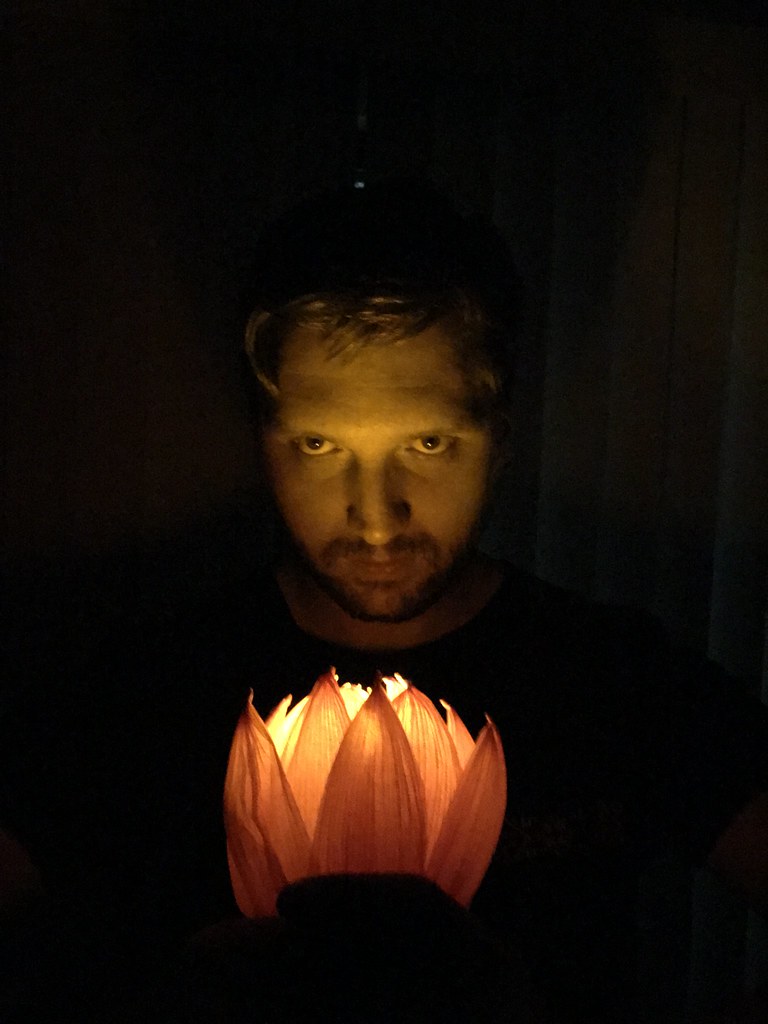
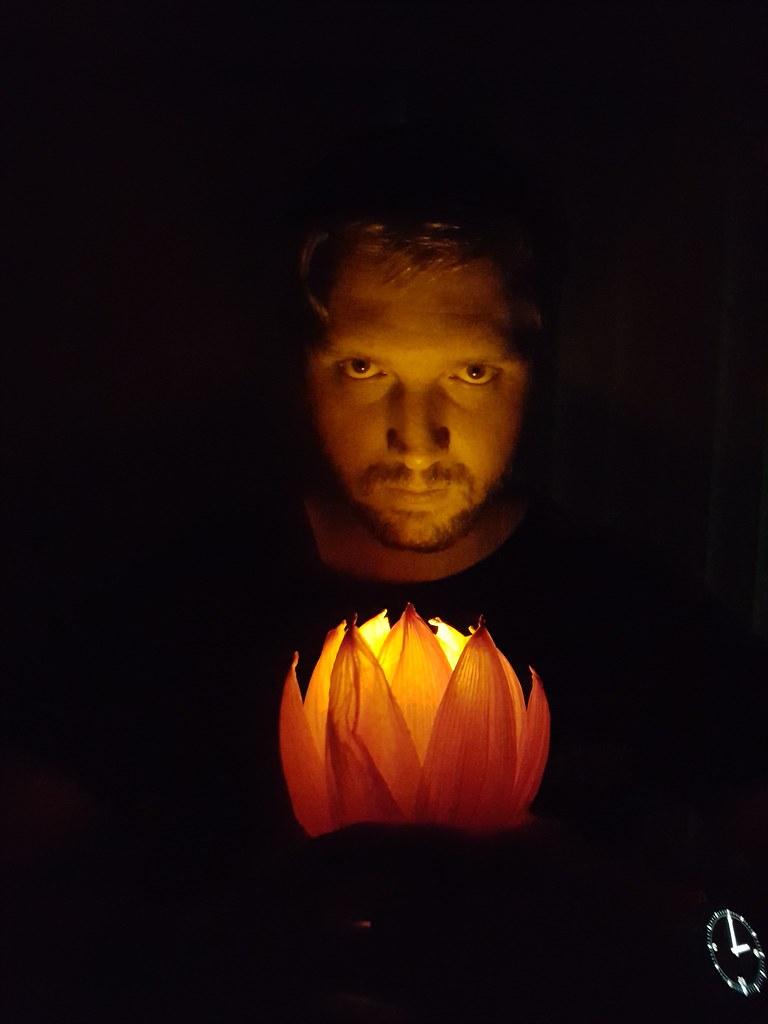
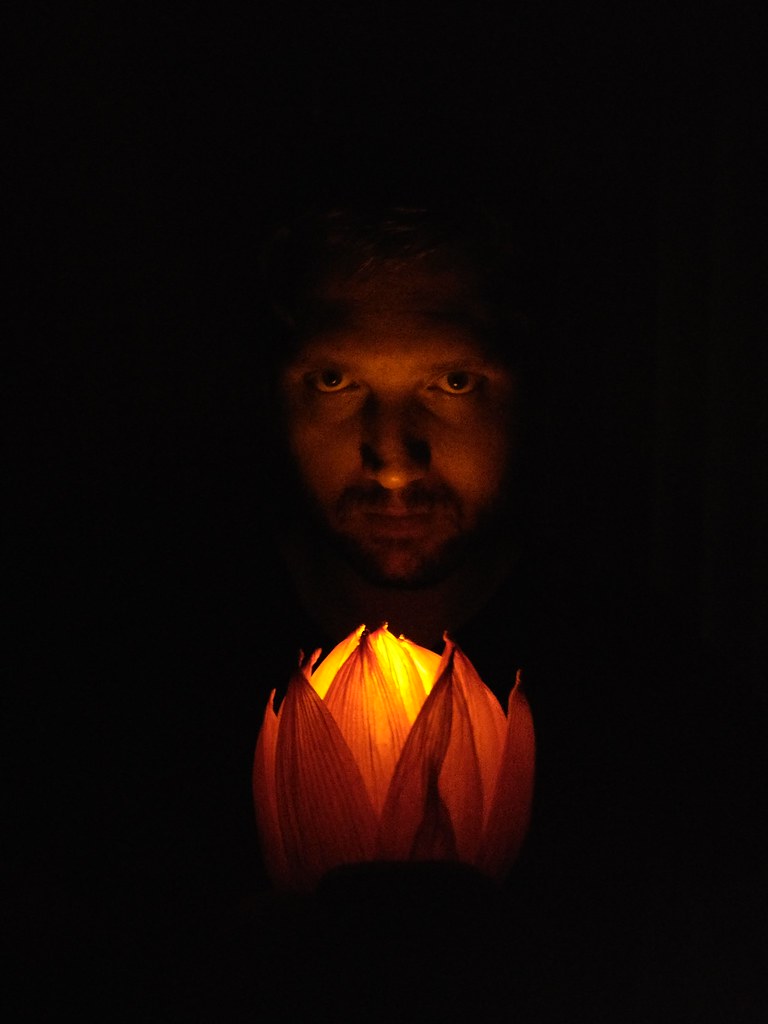 It’s time to make some selfies with the front cameras. Apple significantly improved its front camera module in the 7th generation iPhones, but it does not have just as wide angle as S7 Edge or OnePlus 3. It is also worth noting that Samsung’s S7 Edge front camera is absolutely unusable in low light conditions. Apple iPhone 7 Plus has as really clever trick with replacing absence of frontal flash with the whole surface of front screen. However, with this kind of flashed front pictures look like pictures of a deer that is about to be ran over by a truck, but it is still better than nothing. In a low light without the flash Apple’s iPhone 7 Plus front camera is the best.
It’s time to make some selfies with the front cameras. Apple significantly improved its front camera module in the 7th generation iPhones, but it does not have just as wide angle as S7 Edge or OnePlus 3. It is also worth noting that Samsung’s S7 Edge front camera is absolutely unusable in low light conditions. Apple iPhone 7 Plus has as really clever trick with replacing absence of frontal flash with the whole surface of front screen. However, with this kind of flashed front pictures look like pictures of a deer that is about to be ran over by a truck, but it is still better than nothing. In a low light without the flash Apple’s iPhone 7 Plus front camera is the best.


 Front camera with low light conditions.
Front camera with low light conditions.



 In the conclusion
In the conclusion
Photography – is not just about documenting your life. Sometimes it is a way to tell a story, to deliver author’s vision. For me, any photo-tool is rendered as good or bad by number of factors but main thing is – does it stand in the way between me and my idea. Current smartphones already have all you might need to create good or even fascinating results. It is quite difficult to find an expensive smartphone that would be really bad in this regard. All devices from this comparison – a very good tools that still won’t do all the work for you.
I find it hard to choose clear winner. Samsung’s S7 Edge took the best macro image, for portraits it is better to use Apple’s iPhone 7 Plus new dual camera, OnPlus 3 is the best for it’s price. It is your choice, but remember, that you need to perfect your skills all the time rather than buying new smartphone every year, hoping you will take bette pictures with it.
Vote
And, of course, you can play the role of an expert and vote for smartphone camera that you think is better in this comparison.








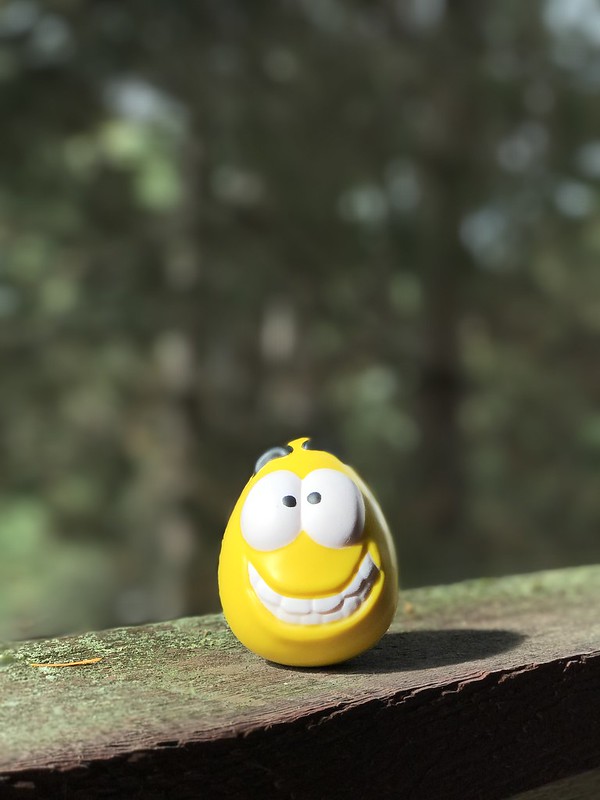
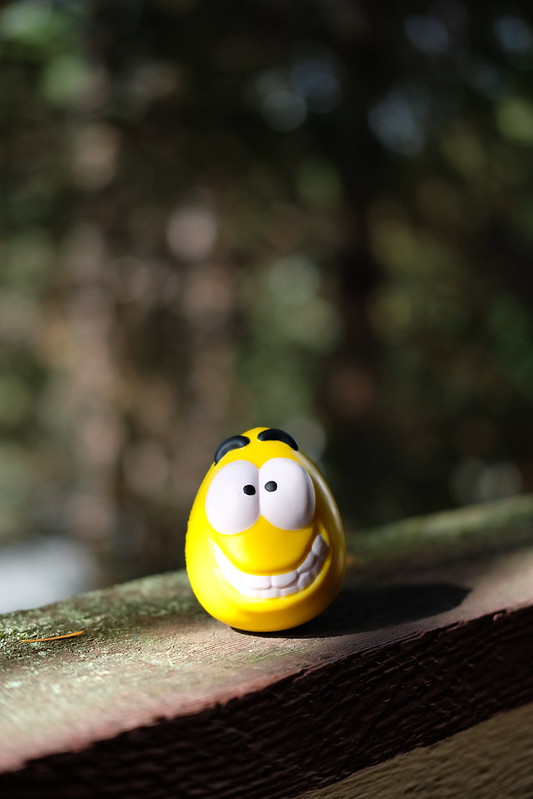
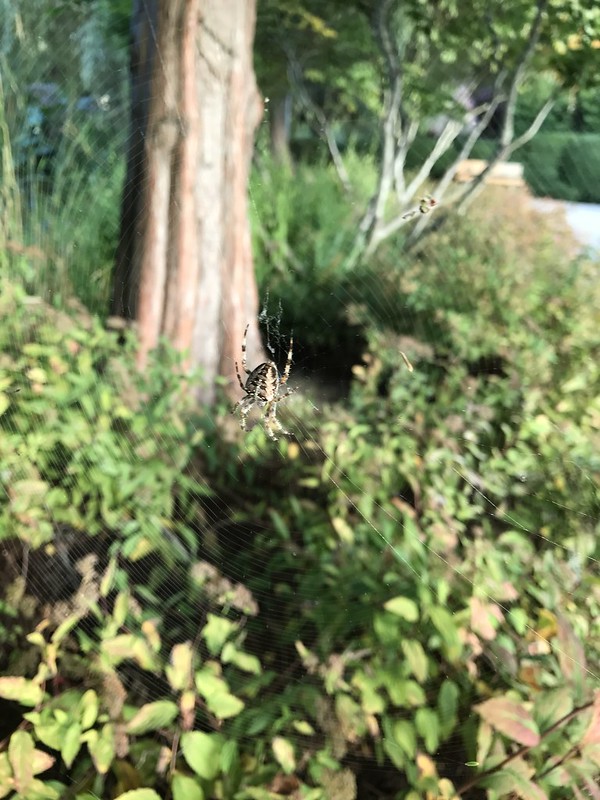
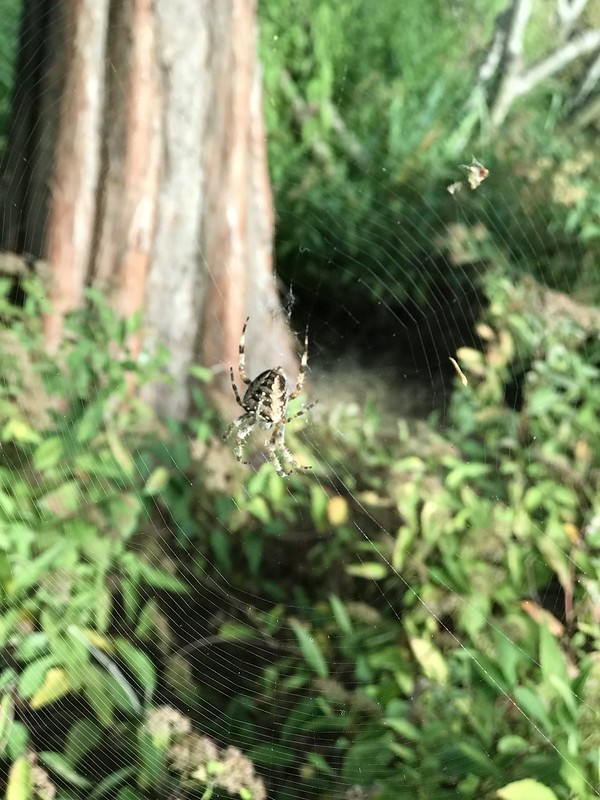
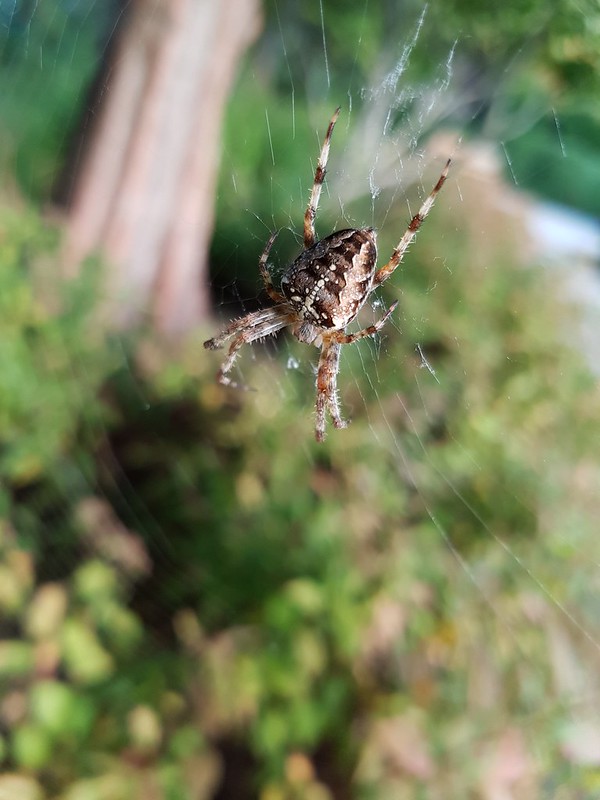
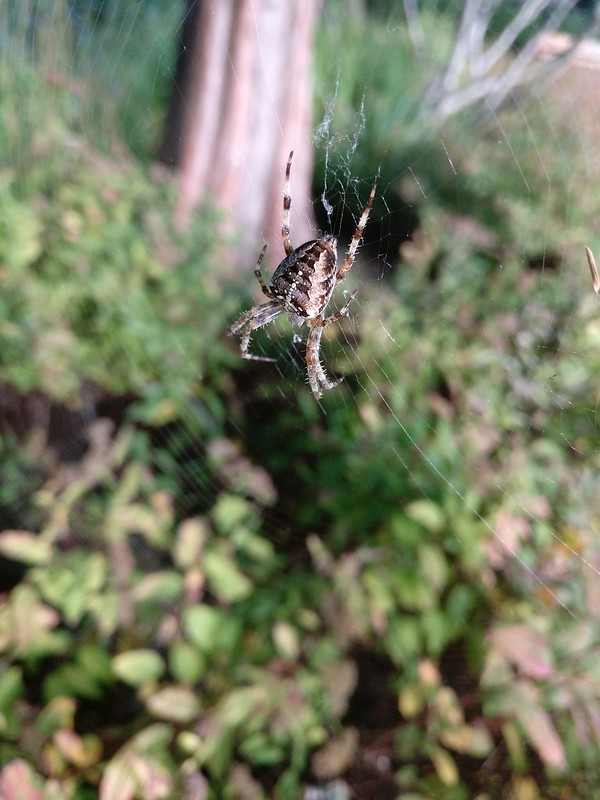
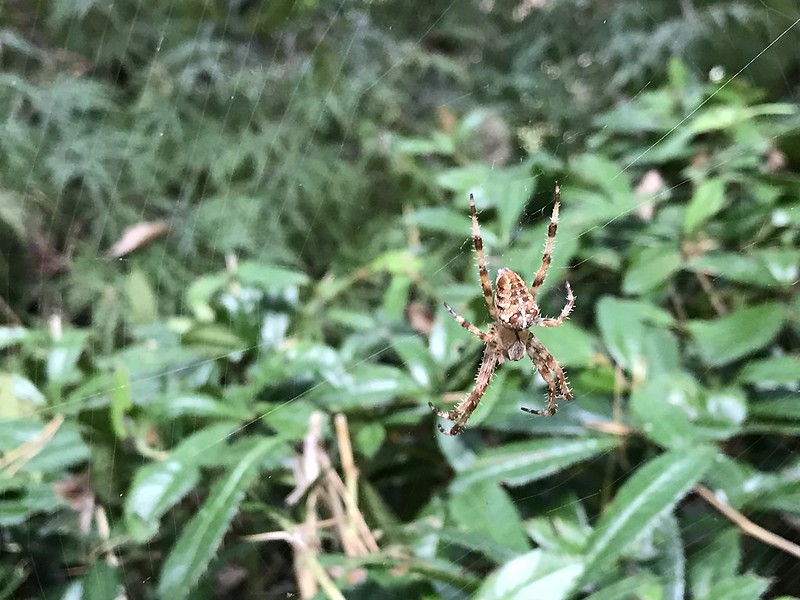
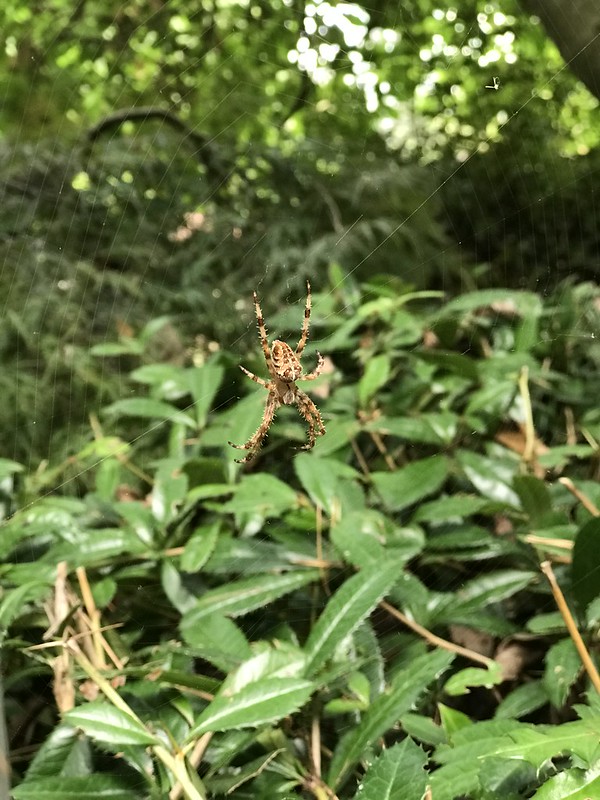
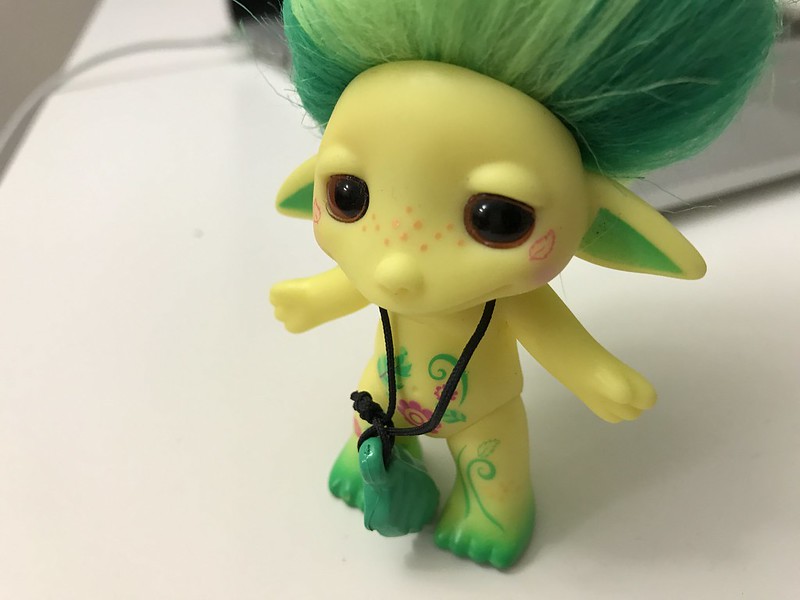
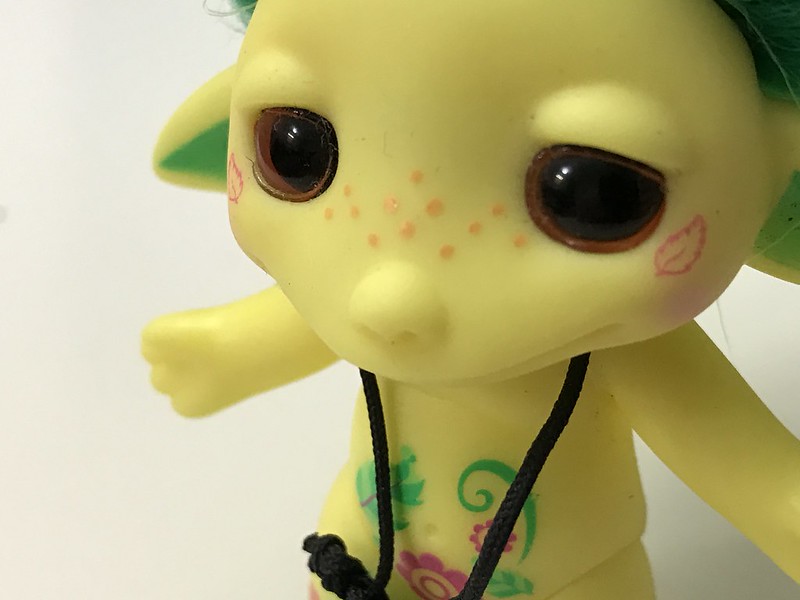
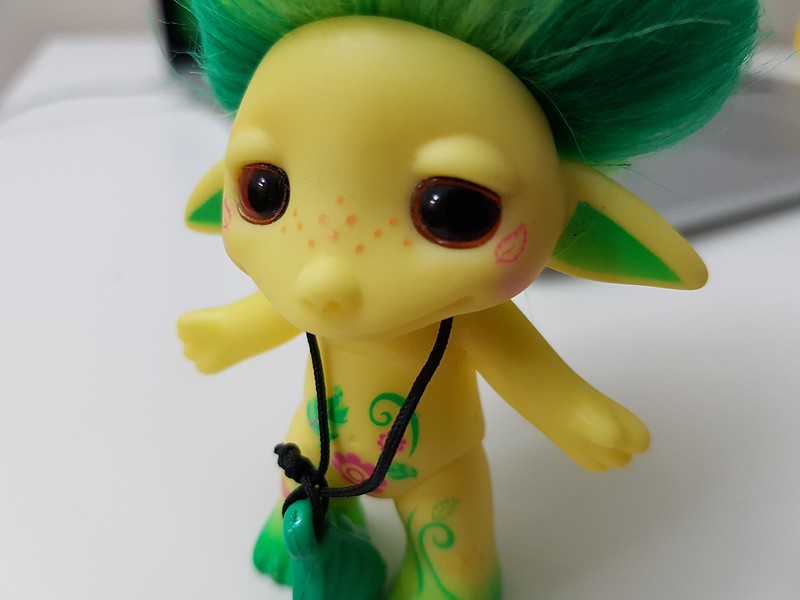
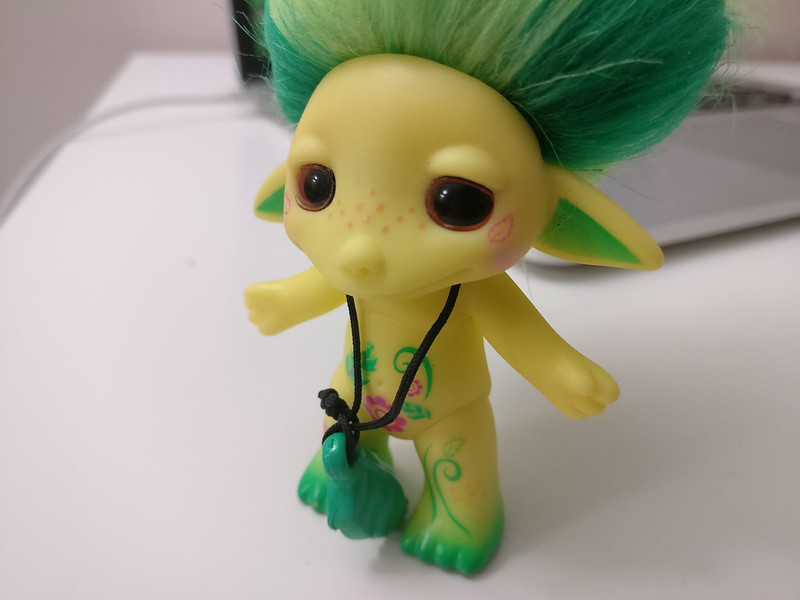
По поводу бюджетности OnePlus очень спорно, 30 тысяч, на гирбесте еще дороже, но ведь если не РСТ, то и SGS7 можно купить за 37 тысяч.
Ну, то что One Plus3 сравнивают с айфоном и самунгом уже о многом говорит в его пользу)))
+100.
Но учитывая последнюю инфу о себестоимости последних Айфонов и их ценах на российском рынке, и сравнивать тут нечего – OnePlus3 однозначно.